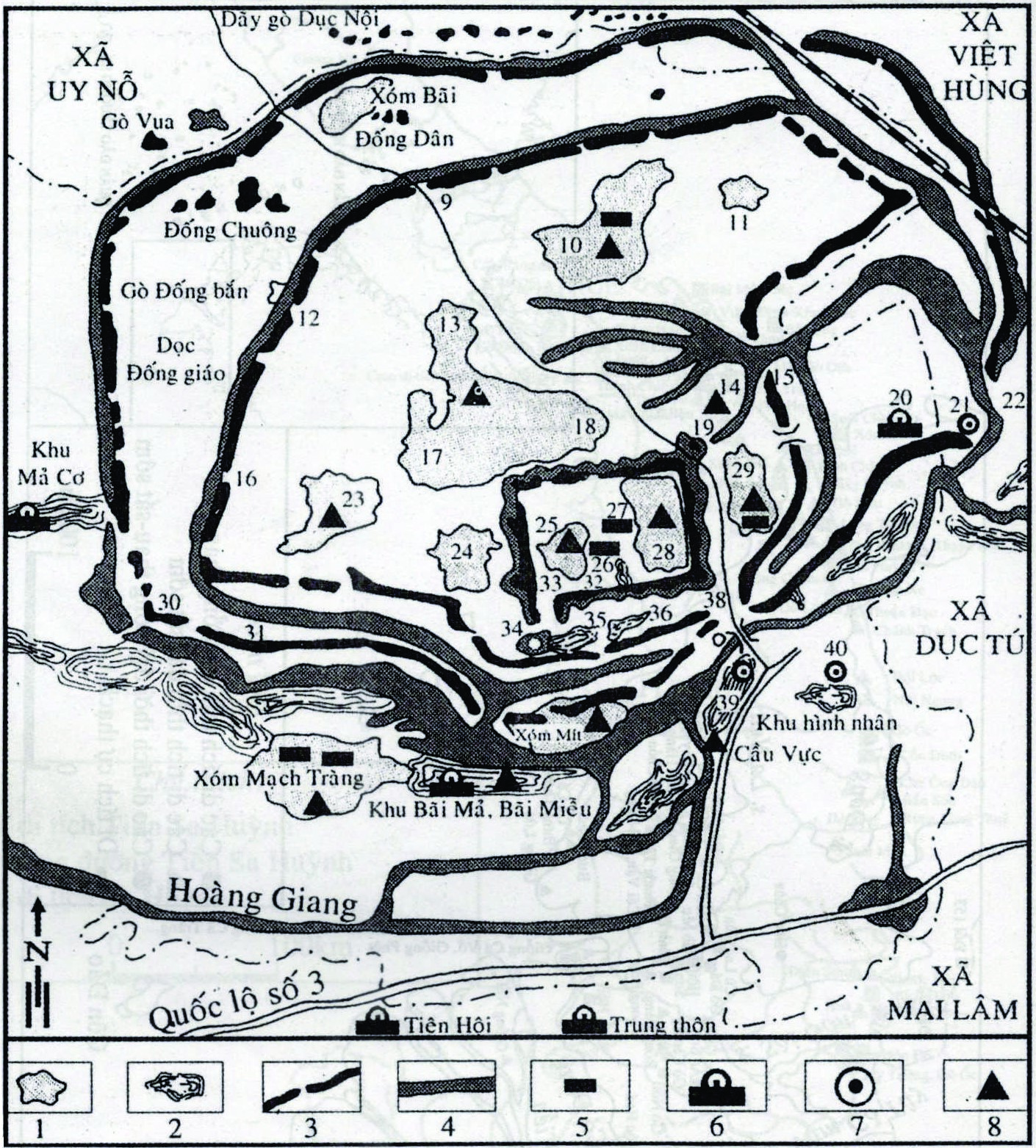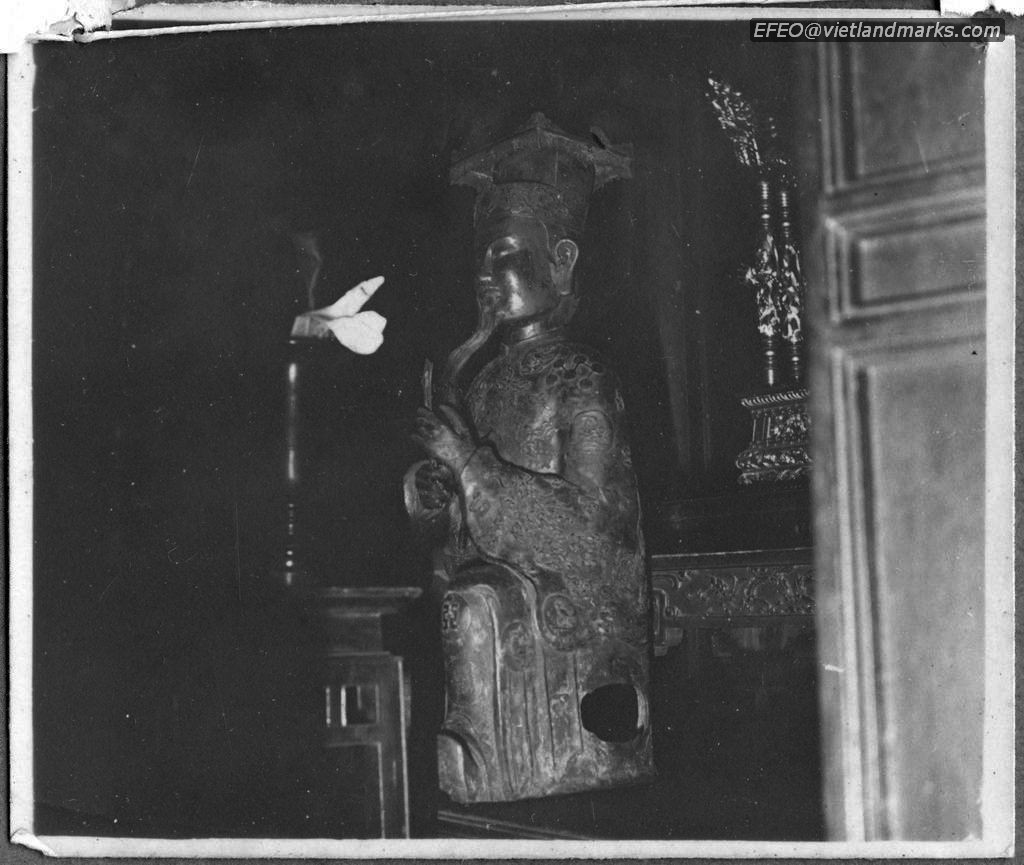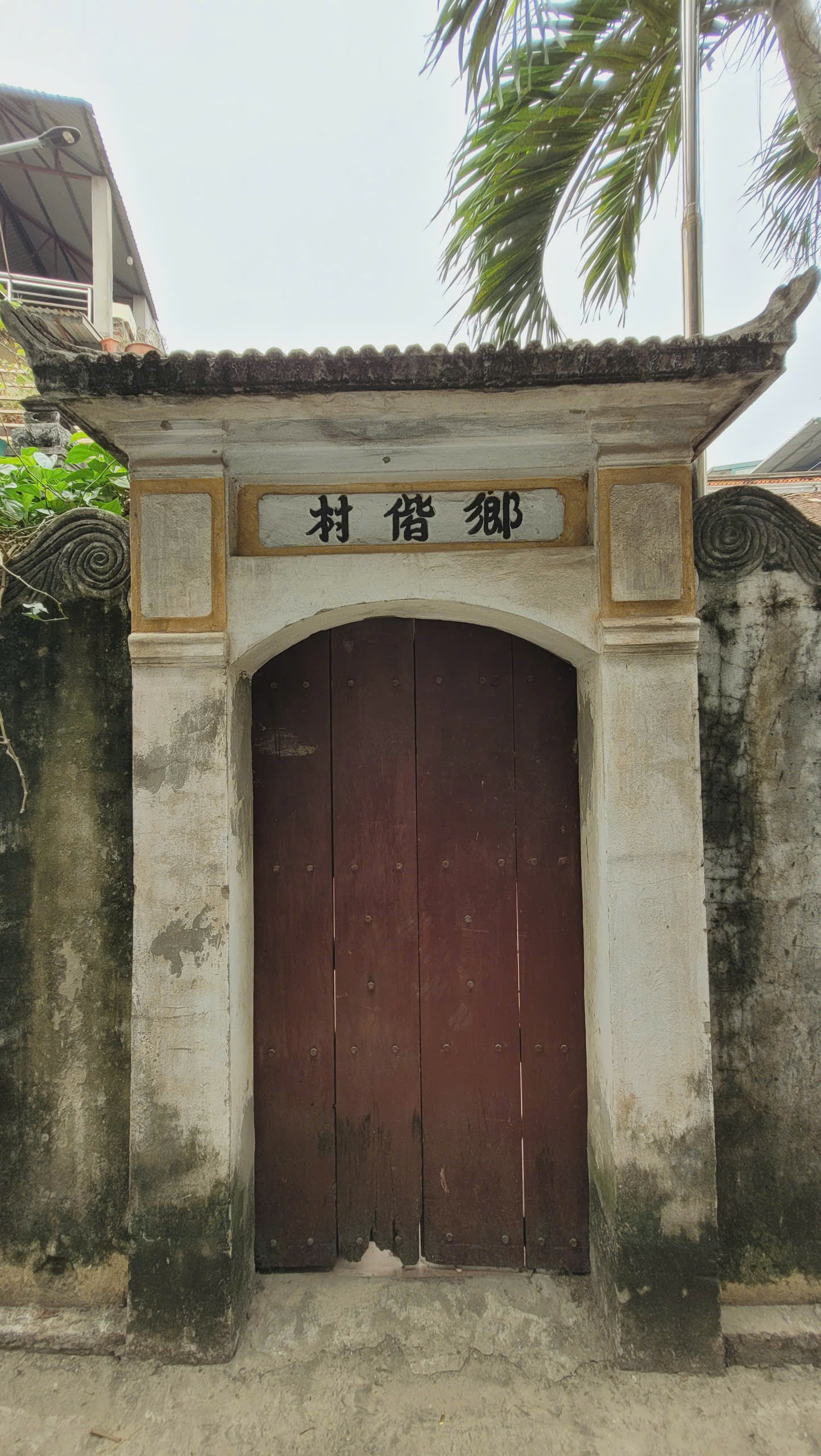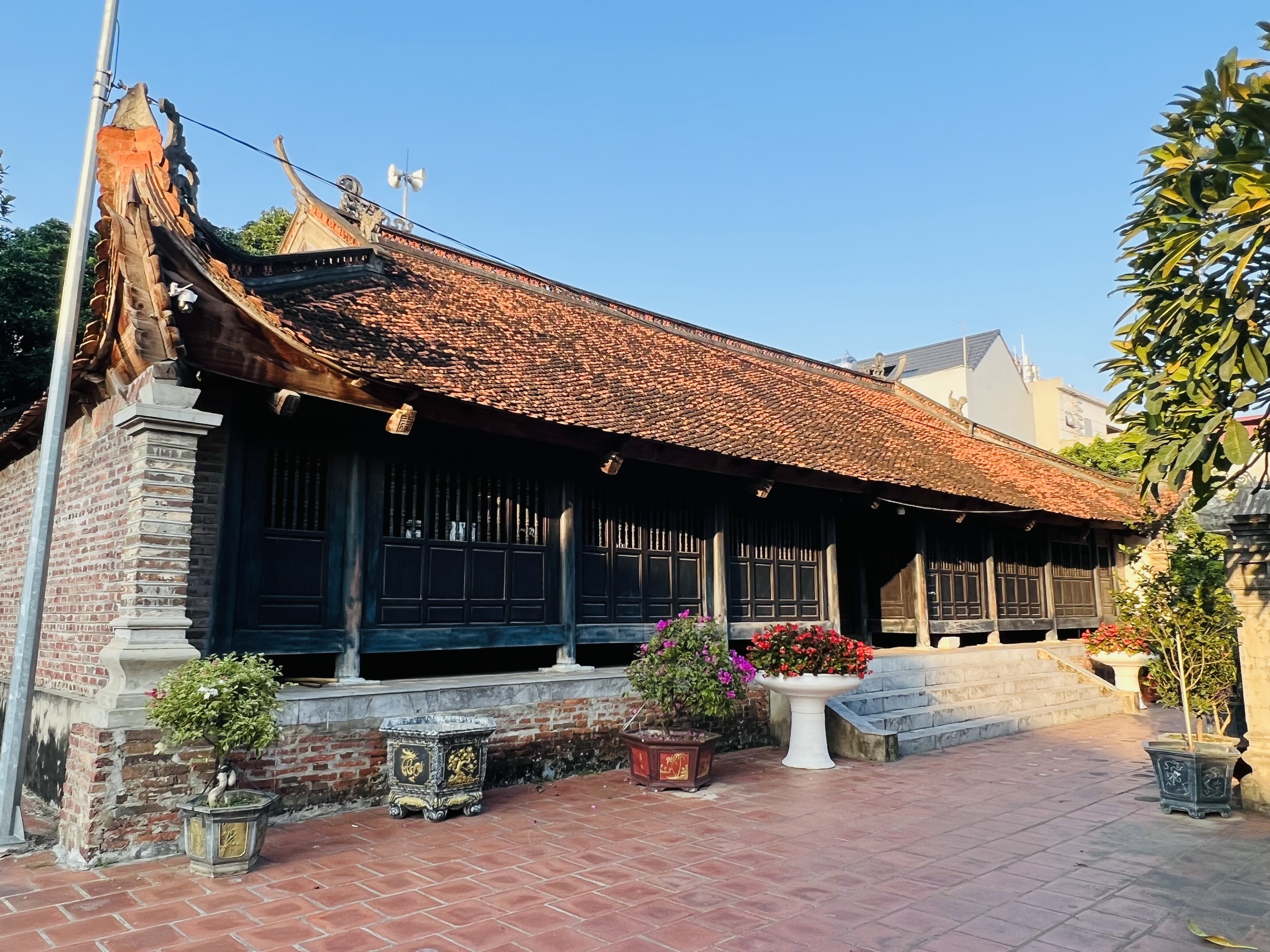Ngoại Sát village (now Vạn Lộc village), Xuân Canh commune, Đông Anh district. Vạn Lộc is an ancient Vietnamese village that King An Dương took great care of and named it Ngoại Sát village and gave them the right to supervise and control, no one could enter the city without permission. There are also opinions that Ngoại Sát is a place to punish criminals. This is a very important land protecting the west of Cổ Loa citadel. As a village in “Bát xã Loa Thành” (Eight communes of Cổ Loa citadel, include: Cổ Loa, Ngoại Sát, Đài Bi, Văn Thượng, Cầu Cả, Mạch Tràng, Thư Cưu, Sằn Giã), the people of Ngoai Sat village have contributed human and material resources to build citadel, fight against foreign invaders, expand the territory, and build the increasingly developed Âu Lạc State.
Ngoại Sát village festival is held at the communal house. The old Ngoại Sát village communal house is no longer there. According to the elders in the village, the old communal house was built entirely of wood and was damaged during the war. In 1978, the cooperative agreed to demolish the communal house, and the communal house's wood was used to make looms, embroidery frames, and cabinets. The communal house today was rebuilt in 2007 on a plot of land with a total area of 3200m2, with an area of about 350m2.
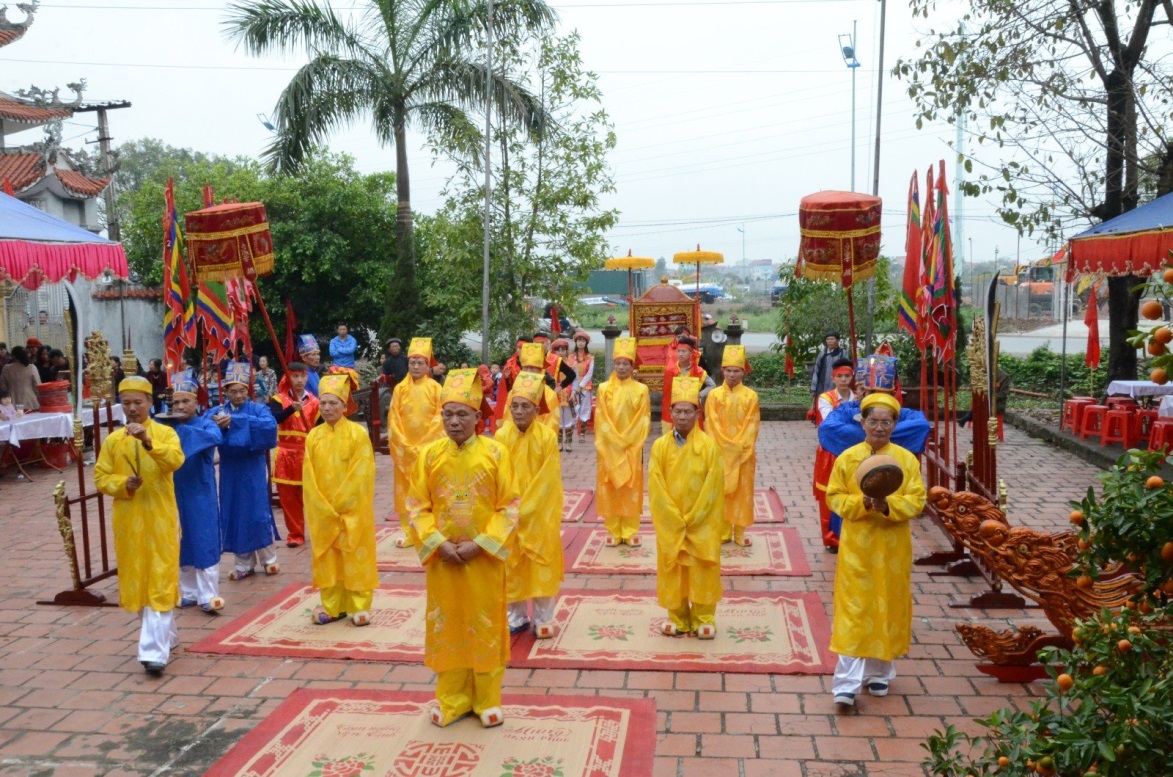 The communal house worships King An Duong - a figure associated with the history of the national construction and defense. To prepare for the Bát Xã Loa Thành festival on January 6 and the festival in Ngoại Sát village (January 9), preparations began at the end of the 11th lunar month. The first step is to elect the "Thủ hiệu" who plays the drums and gongs. In the village, they must appoint people who are ethical and have perfect family, according to the village's standards. “Thủ hiệu” is wearing a turban, and the feet are wearing “Ký Long” shoes.
The communal house worships King An Duong - a figure associated with the history of the national construction and defense. To prepare for the Bát Xã Loa Thành festival on January 6 and the festival in Ngoại Sát village (January 9), preparations began at the end of the 11th lunar month. The first step is to elect the "Thủ hiệu" who plays the drums and gongs. In the village, they must appoint people who are ethical and have perfect family, according to the village's standards. “Thủ hiệu” is wearing a turban, and the feet are wearing “Ký Long” shoes.
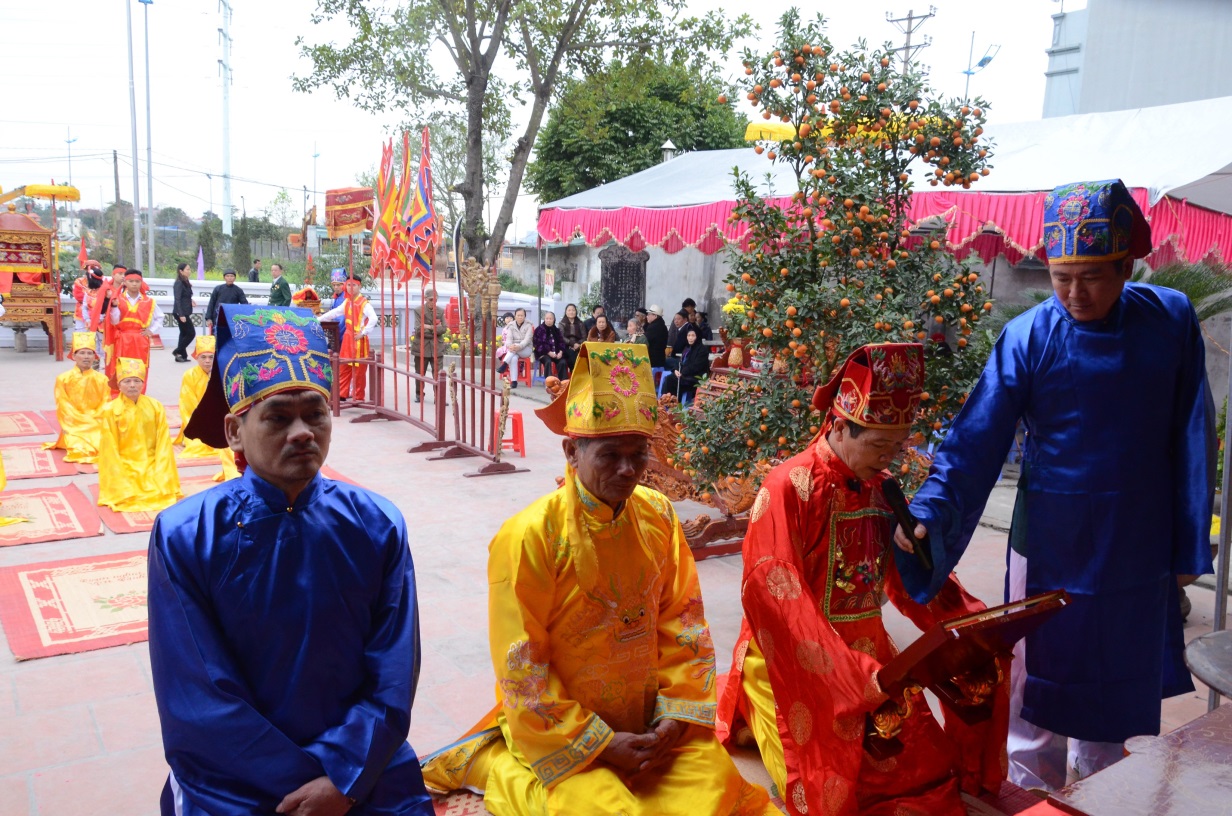 “Chủ tế” (celebrant), also known as “Thầy tế”, or “Thầy lễ”, is elected by the villagers. This person must be healthy, clean, have no problems (no crimes, no funerals...), and be between 50 and 60 years old. Before the ceremony, those attending the ceremony must abstain from eating onions and garlic; take a clean bath. On the 1st, 2nd and 3rd days of the Lunar New Year, “Cụ Từ” is on duty at the communal house to welcome guests to the ceremony.
“Chủ tế” (celebrant), also known as “Thầy tế”, or “Thầy lễ”, is elected by the villagers. This person must be healthy, clean, have no problems (no crimes, no funerals...), and be between 50 and 60 years old. Before the ceremony, those attending the ceremony must abstain from eating onions and garlic; take a clean bath. On the 1st, 2nd and 3rd days of the Lunar New Year, “Cụ Từ” is on duty at the communal house to welcome guests to the ceremony.
In addition, there is careful preparation for the teams, including: the “quân chầu” team (servers), the flag dancing team, the eight treasure bronze procession team, the “bát âm” team, and the flag procession team, “Ban bài sáp” - Procession steering committee. At the same time, the village also selected a number of young men who were healthy and without deformities to carry the palanquin (called “quân chầu”) and selected a number of young men and women to carry the flag in the procession.
To prepare for the procession at “Bát xã Loa Thành” festival, Ngoại Sát village prepared 2 palanquins:
+ “Bát cống” palanquin: procession of throne and incense bowl.
+ “Văn” palanquin:
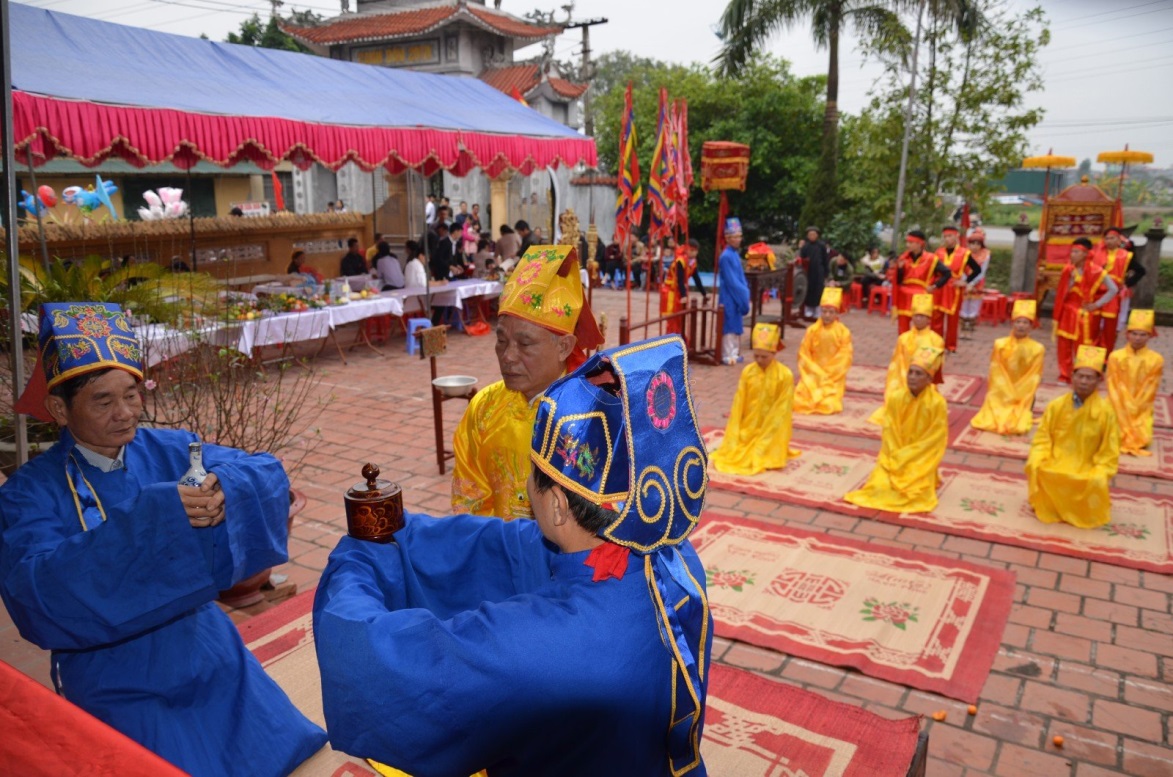 Preparations for the village festival are organized by the village government and organizations (Elderly Association, Youth Union, Women's Union, Veterans Association...). In particular, the Elderly Association is responsible for performing the ritual, while the Youth Union and the Women's Union play the role of recording contributions.
Preparations for the village festival are organized by the village government and organizations (Elderly Association, Youth Union, Women's Union, Veterans Association...). In particular, the Elderly Association is responsible for performing the ritual, while the Youth Union and the Women's Union play the role of recording contributions.
Offerings include: incense, fruit, flowers, meat, sticky rice, boil chicken, wine, joss paper. The possecties are prepared by “Cai đám”. On the morning of January 9, after the opening ceremony and incense-offering ceremony of organizations, departments, resident communities and visitors, the ceremony began. The ceremony method at the Ngọai Sát village festival still follows the method at the Cổ Loa festival.
In addition to traditional sacrificial activities, in the Ngoại Sát village festival in recent years, there has been an incense offering and drum dancing ritual performed by the female ritual team after the sacrificial ritual by the male ritual team.The group walks in a long line, the leader holds incense, the rest follow holding flower vases, candy trays, and fruit trays. After bring offerings to the altar, the group goes out in rows and worships to the beat of the drums. After the incense offering ritual is the drum dancing ritual. To start the drum dance, the leader of the group with his hand covered in red cloth holds incense followed by 4 people (2 people/ offering tray) carrying flowers and candies. When arriving at the communal house's porch, the drum dancing team did not enter but passed the offering trays to the people in the incense offering team to bring to the altar, then went to the communal house's yard to worship to the beat of the drum to prepare for the drum dance. The lineup to perform the drum dance ritual includes: 9 drum dancers (1 big drum, 8 small drums), 1 person holding a cymbal, 4 flag dancers, 4 candle dancers, 12 people playing cylindrical drums. The drum dance ritual takes place as follows: 9 people dance drums to the beat, then the flag dancers, candle dancers and cylindrical drum dancers take turns dancing according to the predetermined rhythms.
As part of Bát xã Loa Thành, Ngoại Sát village, Xuân Canh commune is annually honored to participate in the procession ceremony at Thượng temple (temple of King An Dương) on January 6. The government of Ngọai Sát village is always aware of its position and responsibility, so it has carefully prepared for the Bát xã Loa Thành festival. During the sacrificial ceremony of Bát xã Loa Thành, Ngoại Sát village was responsible for "củ soát" (checking) the offerings brought to the king.
After completing their tasks at the Bát xã Loa Thành festival, Ngoại Sát villagers returned to the village to continue organizing the festival on January 9. The ritual ceremony held at the communal house showed the solemnity and sacredness of a cultural activity that opens a new year with hopes for a full and prosperous life.
The ceremony rituals in the Ngoại Sát village festival also follow the steps in the Bát xã Loa Thành festival, showing the methodical, majesty and solemnity of the festival. Besides, folk games take place enthusiastically, attracting a large number of participants. That has created a colorful festival picture that has both the traditional festival features of the ancient Cổ Loa region and the unique features of Ngoại Sát village, Xuân Canh commune.
MANAGEMENT DEPARTMENT OF CỔ LOA VESTIGE SITE
